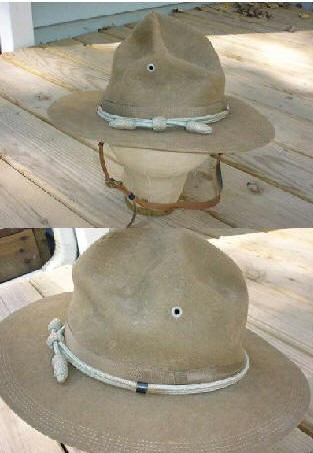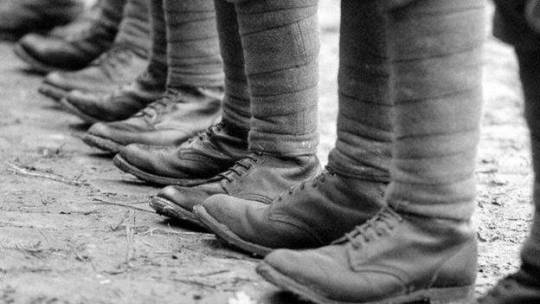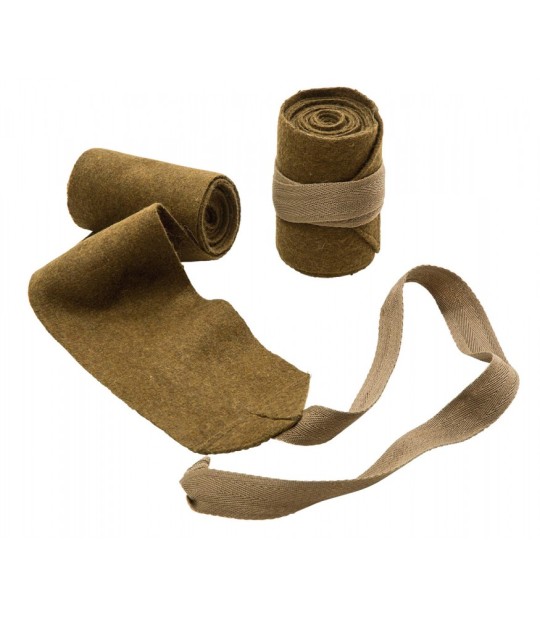June 19, 1918 – Full diary entry:
“Rifle Range.
They issued O’sea caps + wrap leggings.”
This entry made me so happy, especially after the last few in which I completely failed to understand where Robert was or couldn’t figure out why Sgt. Haley shot “Slim Jim.”
After briefly wondering what an “O’sea cap” was, it all became clear and I really enjoyed learning about this. Information and photos are from The Doughboy Center, part of WorldWar1.com.
When the U.S. entered the war, the soldier’s official headgear was the “Montana” campaign hat, as it had been since 1911.

This hat served the Army well during the Spanish-American War. But once the doughboys reached France and were issued steel helmets, a problem arose – what to do with the campaign hat when the soldier needed to wear his helmet?
Enter the Overseas cap.

In addition to being smaller and lighter than the campaign hat, the Overseas cap had the immediate benefit of fitting into the soldier’s pocket for easy transportation while wearing a steel helmet.
It’s incredibly easy to see how completely the new style took over – just look at nearly any photo of troops on board a ship on the way to France and compare to a photo of troops on the way home:

Chaplain Edwards has a few things to add in From Doniphan to Verdun:
In Pouxeux we were issued helmets of steel, and an article officially designated as the “overseas cap.” This cap is looked on by a soldier with the same aversion a dog bestows upon a tin can. One day a pro-German sympathizer became intoxicated. While in that condition he designated this monstrosity, and in some way it become adopted by the War Department. One can not describe it, but the more one thought of an overseas cap the better one loved the tin helmet! Spiral puttees were also issued, and the regiment was equipped with clothing and stores.
Wrap leggings, or “puttees,” were another iconic piece of the doughboy uniform.


Soldiers from many countries wore these. They were very inexpensive to produce in great quantity, and allowed an army to avoid having to outfit soldiers with pants of different lengths. They could also provide short boots rather than heavier and more expensive tall boots.
Where was Robert today? See the timeline.